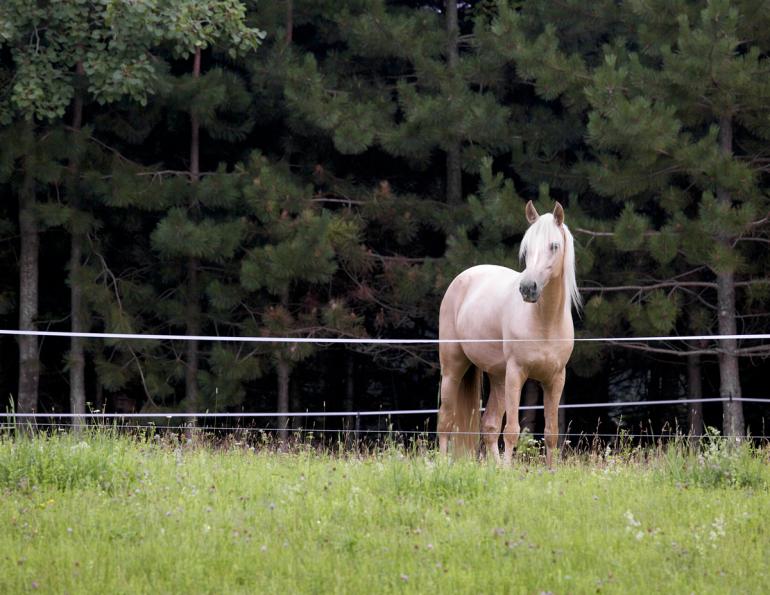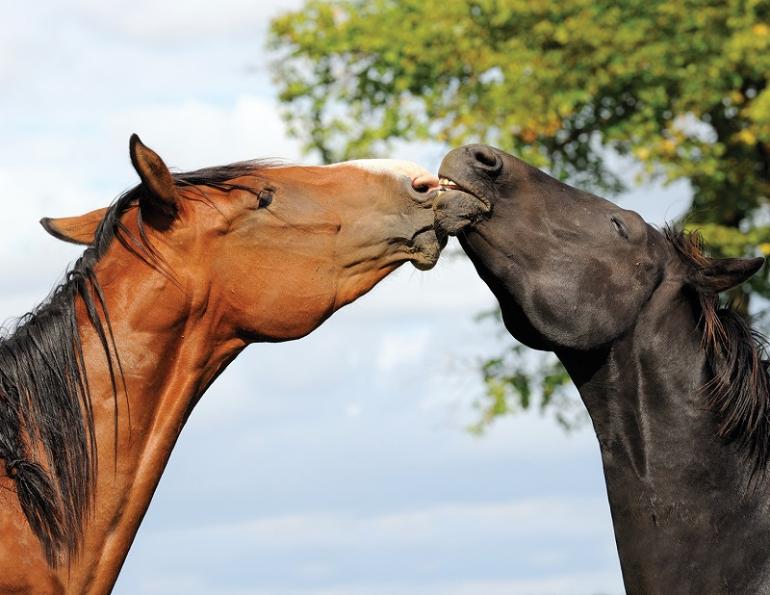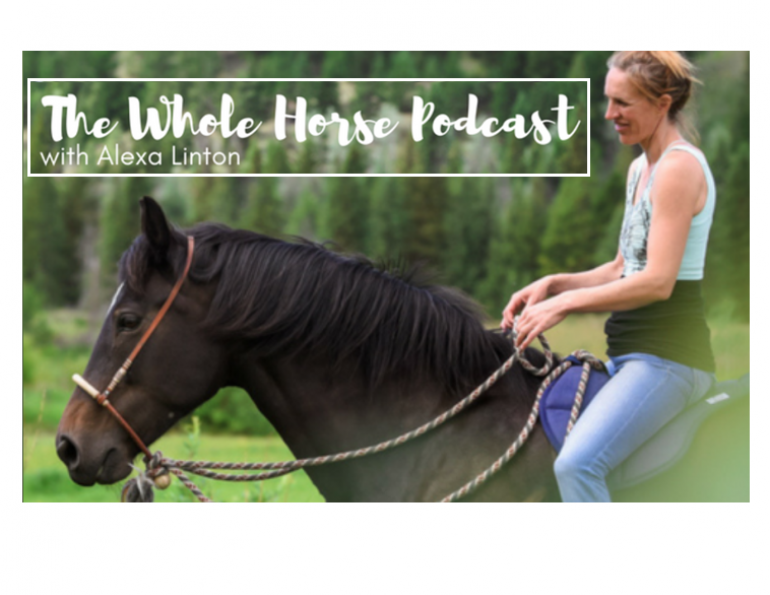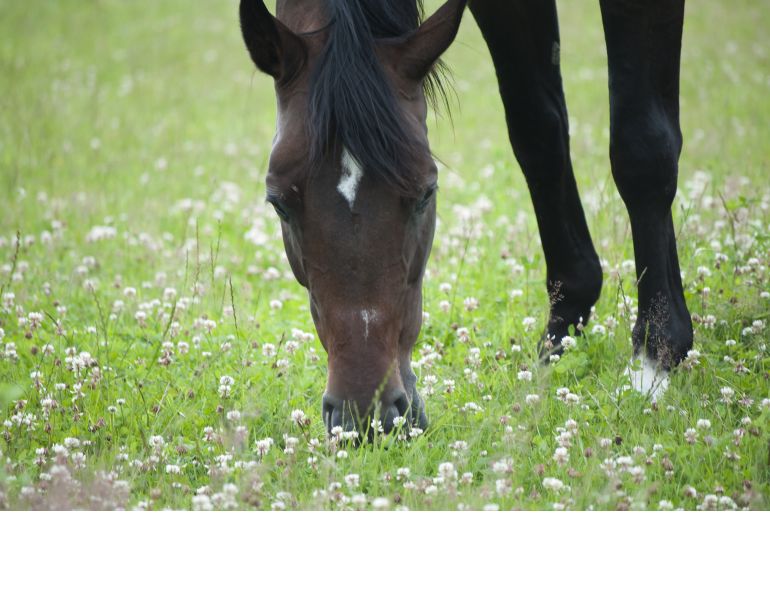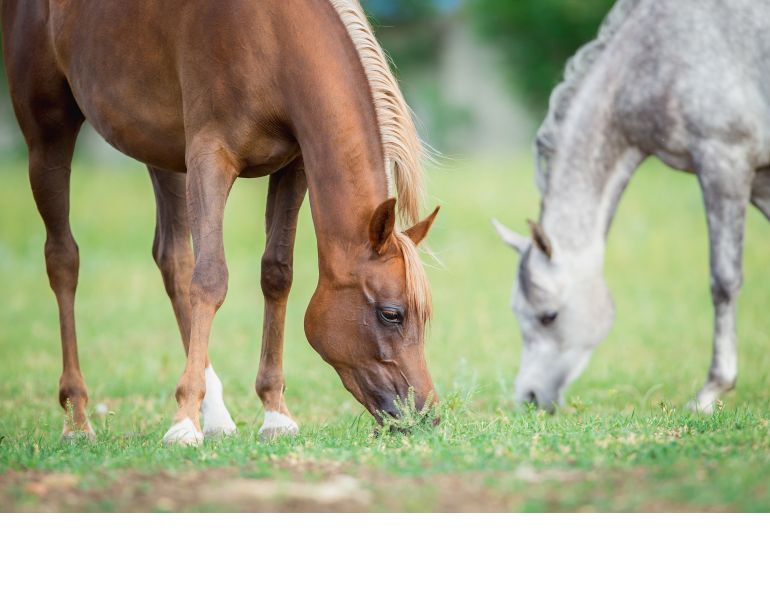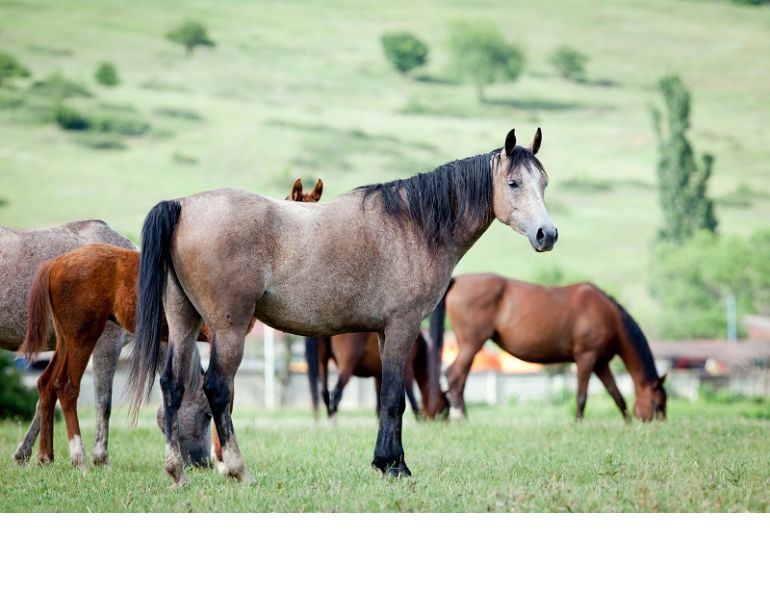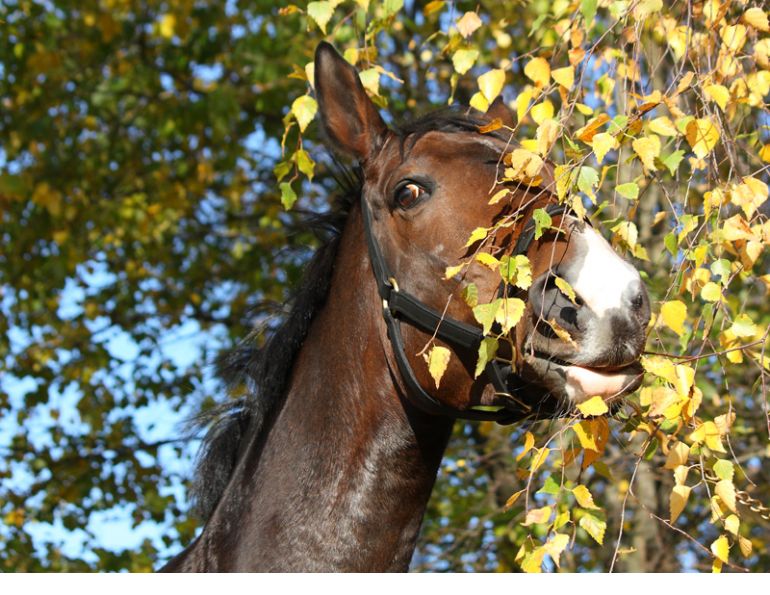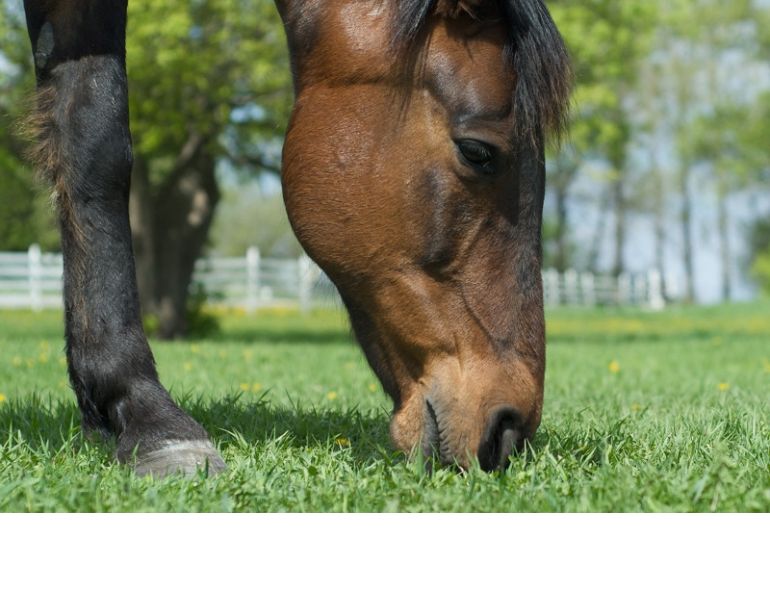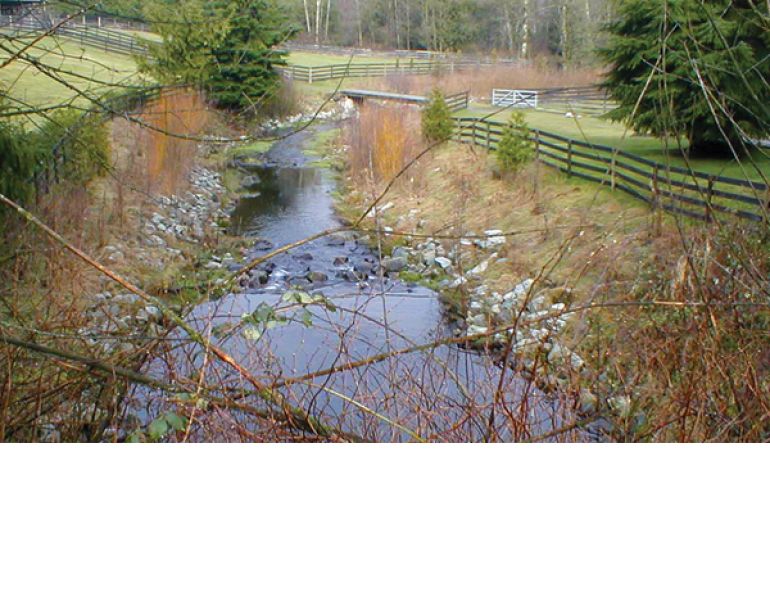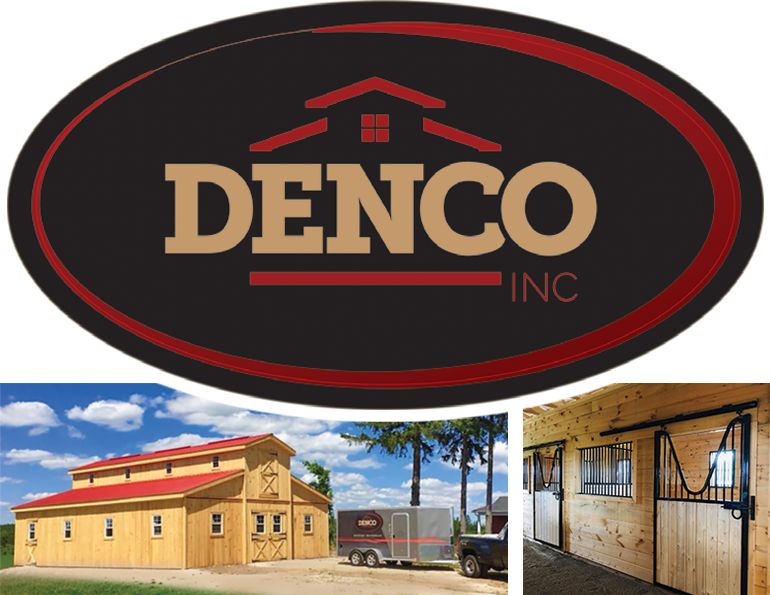By John Ferris, Full Dip. Tech., Prod. Eng.
Watching horses wade into a lush spring pasture is a satisfying sight after a long Canadian winter. Some simple management tips will ensure your horses can enjoy that lovely grass well into the next few months, weather permitting.
Allowing your horses to overgraze one piece of land will create problems for both the animal and the pasture. Too much grass too soon can cause founder, and once the grass is gone, horses will often resort to eating weeds, some of which are toxic. As for the land itself, once the roots are exposed and trampled, the grass will not return and you will be left with a dry, weedy wasteland.
There are several factors that should be taken into consideration when grazing. One is the amount and quality of pasture that you are working with. Another is the type of animal that you are grazing.
Looking at the first point, if we have a small area of very succulent, high protein grass available, the horse can be put on a smaller strip-grazing area for a shorter period of time, and moved frequently to ensure that a good level of nutrition can be maintained throughout the growing season.
Of course, if irrigation is available, then a schedule of harrowing or scattering (or removal) and watering after grazing can be easily accomplished if the areas are kept small. These areas will then replenish quickly, fly problems will decrease, and the grass will return green and healthy.
As for the type of horse you are grazing, common sense dictates that the amount of pasture and length of time a working Thoroughbred can spend at grass is entirely different from that of an aging Arabian gelding or rotund pony. Therefore, if we have a selection of different types of eaters in our barns, strip grazing is a cost effective and simple way to separate them onto grazing areas best suited to them — lower quality feed for those “dumplings” and the lush stuff for the lean, high-energy, hardworking “sporty models”. Strip grazing is a great tool for controlling the founder candidate while making his life a little more interesting than if corralled for the summer in a dirt paddock.
Some of us have those backyard pals who are easygoing enough to use for cleanup jobs in the laneways, driveway edges, etc. Strip grazing methods will work here too, and save on the gas, exhaust fumes and the horrendous noise of the weed eater, not to mention all our labour.
It is wise to investigate the nutritional value of your pasture. Check with your local Department of Agriculture to find out if there are deficiencies in your area. On Vancouver Island, for example, there is a lack of magnesium, boron and selenium, and horses relying on pasture must be supplemented.
Electric Fencing Is Easy And Safe
Temporary strip grazing is an great solution to the problem of managing pasture. It is economical, easy and safely done by using electric fencing and temporary posts — which are easily installed and moved - and a high visibility, well-conducting hot wire on the correct insulators to fit both the wire and the post.
Panels are another option, but are heavy to move and cumbersome to store when not in use, and are several hundred per cent more expensive than the electric system.
Whether to use tape or strand type hot wire is a common question. Tape is very visible and the insulators are available to fit both the temporary post and tape.
However, on temporary posts, unless a fairly good corner post anchor system is used it is difficult to keep tape tight.
Tape works well if the temporary fence is a cross-fence from an existing permanent post, which can take the strain on proper tape tensioners at either end of the tape. When this is not the case, a strand type with a large enough diameter to make it very visible is probably the answer. Over the past 16 years, in the course of being involved in the fencing business, we have become more aware that horses see white more clearly and easily than other colours or plain steel wire.
In our experience, when smooth or page wire is installed, the addition of a white strand or two has made all the difference to the visibility of the fence. Therefore, we cannot stress enough the importance of using hot wire that doesn’t blend into nature’s landscape of trees, brush, grass, ploughed land, etc., all of which tend to have the common colours of yellow, brown, black, beige, etc. We are firm believers in the brightness and visibility of white to contrast those colours, and therefore have no hesitation in promoting it all the way as a psychological barrier created by the electric fence.
5 Tips For Strip Grazing Set-up
1.) Choose the right fence controller for the job. Mains plug-in, battery and solar models are available to energize your fence. If possible, a plug-in kept undercover and hooked to the fence and ground rod with the proper insulated cable is ideal. Maybe this fencer is already energizing an existing permanent fence, in which case you’ll be able to join into that permanent installation and run your temporary grazing system from it. If you lack hook up for a plug-in controller, the battery and solar models do an admirable job. Whichever model is used, choose one which is “low impedance”, meaning one that has the ability to combat any poor connections and shorts which may be created by trees, bushes or long grass. Choose a controller that has more than the ability for the job — don’t under-power your fence. That way, you have the option to add on later with the confidence that it’ll have enough voltage to reach the entire fence.
2.) Grounding is essential regardless of the type of fence controller used and where it is installed, ie: at the fence or in the barn. Use galvanized ground rods with the proper galvanized or stainless clamps. Use insulated electric fence cable to bring the current from the controller to the fence and the controller to the ground rod clamp (household covered wire is totally unsuitable as it is rated for much lower voltage than electric fence systems, which are high voltage). If you can pick a permanent position for your controller and ground rod using the insulated cable to run out to the fence line, then moving the fence for strip-grazing purposes becomes a much quicker and easier job.
3.) Once your temporary installation is in place, check with an electric fence tester starting at the fence controller and going methodically through to the end of run to make sure things are working well. Check the ground rod — a voltage reading there means something is wrong because voltage should not be leaking into the ground rod and lost to ground. In dry conditions, grounding becomes a problem. One solution is to sink a number of rods approximately 16 feet or more apart and link them together with the insulated cable, or try for an area of damper ground.
4.) Using cut-out switches near your place of entry allows you to turn the power off to a selected area without turning off the whole fence. This is handy when leading horses in and out and also when you are working in the area.
5.) For horses not accustomed to electric fencing, it is very important to take the time to train them to a new installation. Make sure that the area where they are likely to make initial contact with the fence is clear of obstacles and anything that could injure them if they spook or bounce around. Make sure you are out of the way. One or two zaps is usually all it takes and they are quite happy to give the fence a wide berth from then on, and go about their business a safe distance from the electric wire.
Remember, a good permanent property perimeter fence of a construction suitable for the safe containment of livestock is essential.
In summary, strip grazing allows proper management of your pasture, as well as better nutrition and a mind-pleasing activity for your horse. You will also enjoy the more attractive green and fertile look to your property — even towards the end of the summer — if you prevent that grass from being destroyed or severely damaged by overgrazing.
Have a great and green summer.
Author John Ferris and his wife Lesley have operated Ferris Fencing for more than 20 years, specializing in equine, general farm, horticulture, and vineyard applications, complete electric systems, and electric nets. As farmers, horse owners, and engineers, they are experts in the technical aspects of installation and application of fencing systems. For more information, visit www.ferrisfencing.com.
Main article photo: A well-managed grazing program will help keep your pastures greener and horses healthier. Strip grazing allows you to monitor the amount and quality of your horse’s grazing based on his individual nutritional needs. Shutterstock/Chantal Ringuette
This article originally appeared in the July/August 2003 issue of Canadian Horse Journal.



